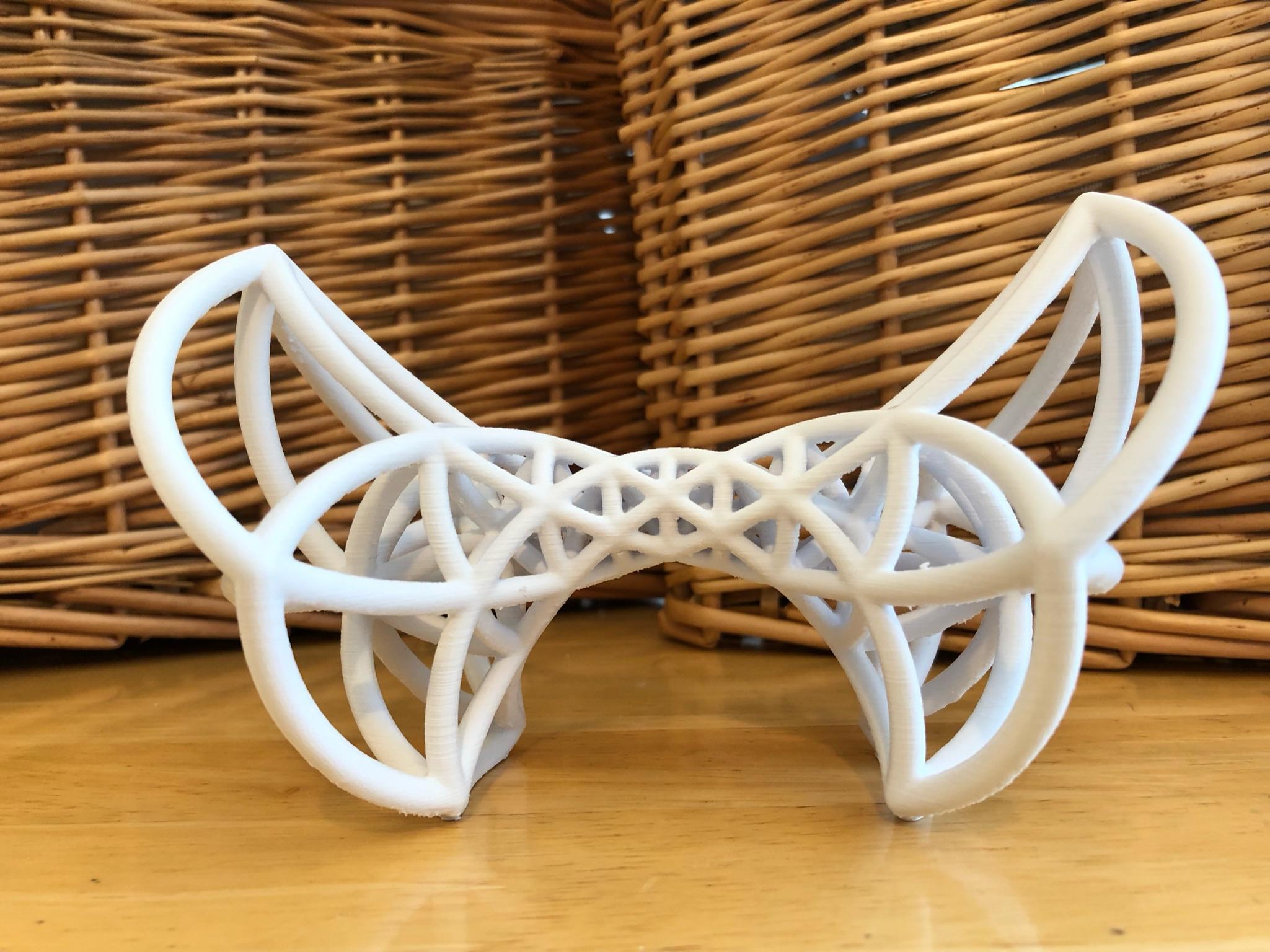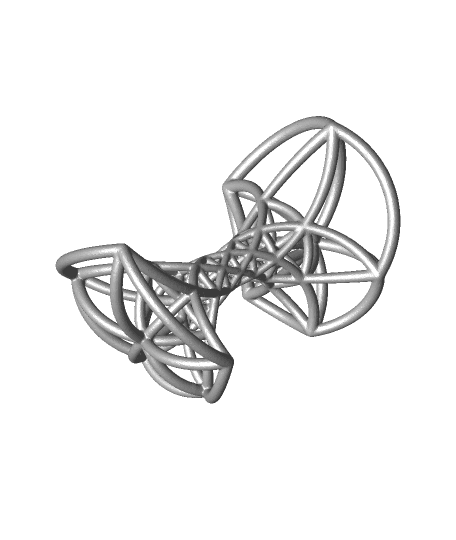This sculpture is one in a series of three derived from the Clifford parallel geodesics of the cell-centered stereographic projection of the four-dimensional 600-cell. Visit my page for links to others in this series. See here for video: https://youtu.be/MTMeT03aBJ0
The 600-cell is a stunningly beautiful regular 4-polytope, but its beauty is nearly impossible to appreciate because, well, we can only perceive three dimensions!
One way to deconstruct and appreciate the 600-cell is to understand it in terms of geodesic great circles. The 600-cell is made up of 72 great decagons. The 72 great decagons can be divided into 6 sets of 12 non-intersecting Clifford parallel geodesics, such that only one decagonal great circle in each set passes through each vertex, and the 12 decagons in each set reach all 120 vertices.
When exploring or printing these sculptures, I encourage you to orient to the geometry by first locating the complete decagons. Every line portion of is course part of a larger great decagon that has been removed to reduce complexity and highlight specific aspects of the geometry.
These are advanced sculptures to print and require meticulous planning and support structures. The models pictured were printed with an FDM printer, 0.4mm nozzle at 0.1mm layer height, although these designs are probably better suited to SLA or SLS printing technology.
This project was inspired by the book "Visualizing Mathematics with 3D Printing" by Henry Segerman.
Learn more about Clifford parallel geodesics and 600-cell geometry here: https://en.wikipedia.org/wiki/600-cell
Clifford Carousel
Named because of its circular symmetries, this sculpture is the easiest to print. It is made up of nine of the smallest Clifford parallel geodesics connected with “struts” to form three interconnected 30-tetrahedron Boerdijk–Coxeter helix rings.
Clifford Core
Named because of its similarity to an apple core, this sculpture does not contain any full geodesic great circles, but instead shows the interrelation between portions of eleven geodesic great circles, one through the middle and ten twisting around. The sculpture can also be seen as portions of five twisted Boerdijk–Coxeter helix rings containing 21 of the full 30 tetrahedrons.
Clifford Climber
Named for is similarity to playground climbing structures, this sculpture contains nine of the largest Clifford parallel geodesics which, like the “Clifford Carousel,” are connected with “struts” to form three interconnected 30-tetrahedron Boerdijk–Coxeter helix rings. This sculpture is the most difficult to understand and by far the trickiest to print!

